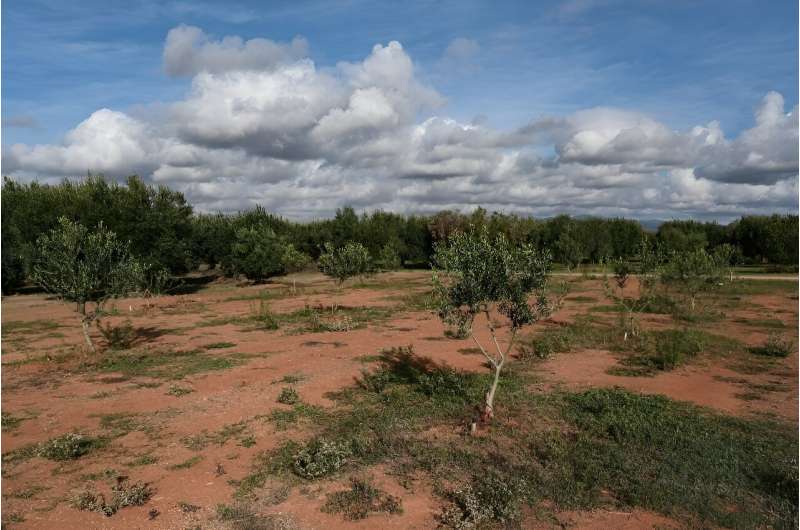
Spain, the world’s biggest producer of olive oil, suffered a very difficult year in 2022 and drought this year has compounded the problem.
In Italy, this year’s olive harvest is down by an estimated 80 percent, according to producers.
The EU estimates global olive oil production will fall more than 26 percent in 2022-2023 compared to a year earlier, to just over 2.5 million tons.
In the EU itself, production is expected to drop 39 percent.
In mid-November, the temperature in the Halkidiki region of Polygyros, northern Greece, was still over 15 degrees Celsius (59 degrees Fahrenheit).
“I consider climate change the main challenge this season,” noted Nikos Anoixas, a board member of Doepel, the Greek national interprofessional organization for table olives.
“At this time, temperatures should be 10 degrees Celsius… the year is already lost, and we fear next year will be similar. I don’t even want to think what will happen if another such year follows,” Anoixas said.
Athanassios Molassiotis, an agronomist and head of the arboriculture lab of Thessaloniki’s Aristotelio University, said his team recorded an increase in temperature of two degrees during October, November and December 2022 compared to a year earlier.
This affected the olive buds “because we know that the tree bears fruit after cold winters, especially the Halkidiki variety, which has high requirements at low temperatures in winter,” he said.
Halkidiki accounts for around half of edible table olives produced in Greece.
“We found that in many trees, there was no flowering and therefore no fruit afterwards,” Molassiotis said.
A climate change study for the Halkidiki area in January showed the local average temperature is expected to increase by 1.5-2 degrees Celsius in coming years, according to the best-case scenario.
At worst, it could be three degrees.
The Aristotelio University study also predicts less rain.